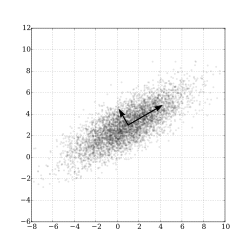Principal component analysis

Principal Component Analysis (PCA) is like a magic trick that helps you make big, complicated sets of information simpler, so you can understand them with ease. Imagine you have a really big box filled with coins, like a hundred coins of different sizes, shapes, and colors. You want to figure out what’s inside the box without having to count every single coin, so you decide to use PCA.
PCA works like a game of Jenga: you take the coins out of the box and stack them on top of each other. When you do this, you can start to see patterns in how the coins fit together and how many of each type of coin there are. This is how PCA works: it takes a large group of info, like lots of coins in a box, and finds patterns so you can understand the whole group with only a few pieces (like how many of each type of coin).
It doesn’t matter if the info is about coins or about people or about something else- PCA can help you see the big picture without having to look at every single detail. That’s why it’s so useful!
PCA works like a game of Jenga: you take the coins out of the box and stack them on top of each other. When you do this, you can start to see patterns in how the coins fit together and how many of each type of coin there are. This is how PCA works: it takes a large group of info, like lots of coins in a box, and finds patterns so you can understand the whole group with only a few pieces (like how many of each type of coin).
It doesn’t matter if the info is about coins or about people or about something else- PCA can help you see the big picture without having to look at every single detail. That’s why it’s so useful!
Related topics others have asked about:
CUR matrix approximation,
Canonical correlation,
Correspondence analysis,
Detrended correspondence analysis,
Directional component analysis,
Dynamic mode decomposition,
Eigenface,
Expectation–maximization algorithm,
Factor analysis of mixed data,
Factorial code,
Functional principal component analysis,
Geometric data analysis
